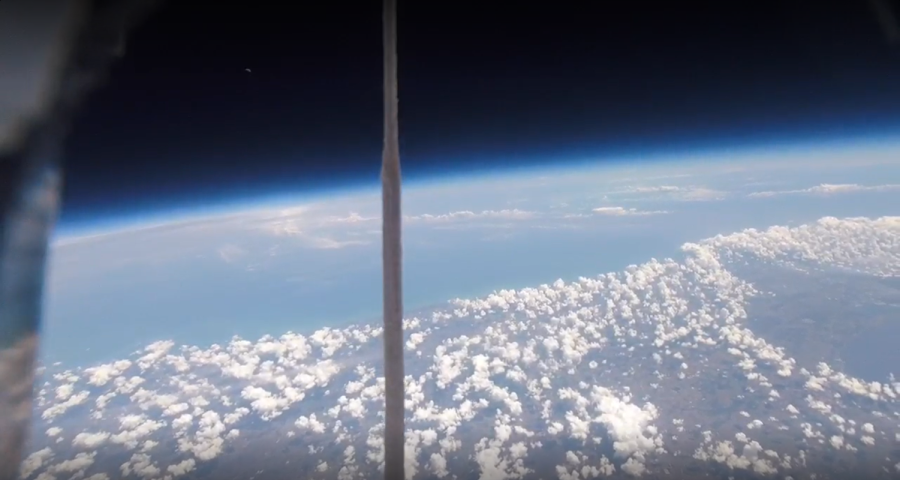Aerospace Club successfully launches balloon into space
The Aerospace Experimental Association is a club at FAU that is giving students the opportunity to learn about aerospace science while promoting interest in establishing an aerospace engineering program.
April 5, 2023
Editor’s Note: This story will be updated when more information becomes available.
The Aerospace Experimental Association (AXA) successfully completed a 112,000 foot balloon launch into space on March 28 in Duette, Fla., to test the effect radiation has on plants.
The project took months to prepare due to collecting materials for the project, watching weather predictions, and determining an appropriate launch site.
AXA members advocate for starting an aerospace engineering major at FAU.
“At AXA our mission is to show students and anyone willing to learn about aerospace that it just takes one idea and collective determination to reach for the stars,” mechanical team member Dayanara Ochoa Rossell wrote in a statement.
The club hopes that they can continue to be successful in their projects as a way to show FAU that there should be an aerospace engineering degree program.
The launch of the high-altitude balloon was a joint-college effort, headed by Oscar Curet with the Department of Ocean and Mechanical Engineering, and Xing-Hai Zhang with the Department of Biology. The project had financial support from FAU WAVE, the College of Business’ Adams Center for Entrepreneurship, and the National Science Foundation’s I-CORPS Program at FAU, and FAU OURI.
“[Zhang’s] research focuses on radiation and plants and one of his studies that he did was he figured out how to genetically modify, I think it was tobacco and tomato plants, to make them radiation resistant, like cosmic and gamma radiation. And we’re taking that research and we’re going to prove it by sending it up and actually getting space radiation,” said Jake Pearman, president of AXA.
Pearman believes their biggest takeaways from the launch was never giving up and that hard work pays off. Andre Fernandes, the founding vice president, a designer and software coder for the club, echoed Pearman’s biggest takeaways.
“Our first launch was a failure, but I think the success we felt at [this] launch let us understand that failure isn’t a bad thing, and that we learn more from failure than waiting for the perfect time (which never comes). As the saying goes, ‘a good plan executed now is better than a perfect plan executed later,’” Pearman wrote in a statement.
Fernandes said that everyone got excited when they had realized the launch would be a success.
“The launch went as successful as it could have went,” Fernandes said.
He said it was a “surreal” moment when the balloon mission was a success.
AXA currently does not have the results of the experiment as they are still culturing the plants and waiting for data.
The purpose of the club is to give students the opportunity to learn about aerospace science and conduct experiments such as the high-altitude balloon launch, Pearman said. FAU’s College of Engineering does not offer an aerospace engineering degree, which the club says their roughly 30 members would be thrilled to have.
“Currently there is no Aerospace/Astronautical program at FAU and with this project/mission, more students will be able to join the school for aerospace and learn how we can contribute to the advancement of space exploration and be a part of NASA’s new upcoming missions,” Rossell wrote in a statement.
Jessica Abramsky is the News Editor for the University Press. For more information on this article or others, you can reach Jess at [email protected] or DM her on Instagram @jessabramsky.






